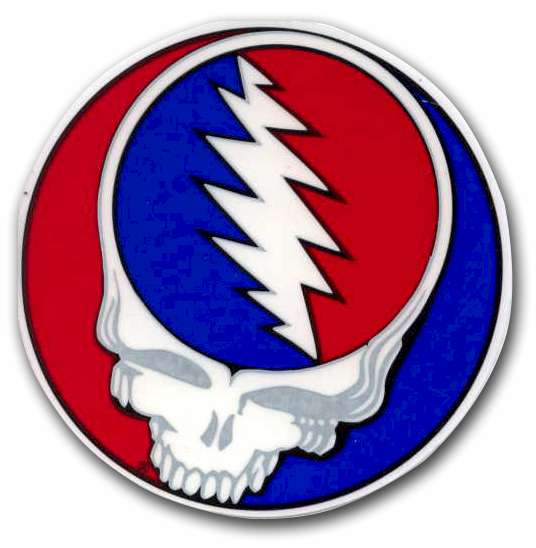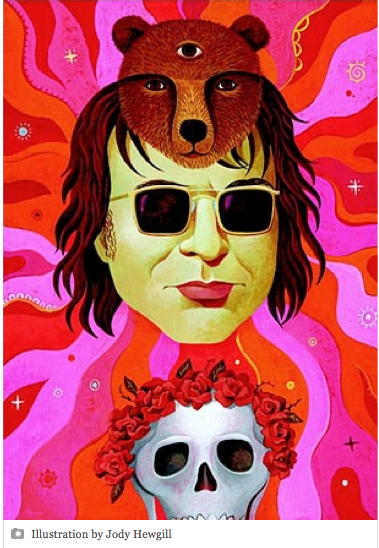
NEW YORK TIMES: Owsley Stanley, the prodigiously gifted applied chemist to the stars, who made LSD in quantity for the Grateful Dead, the Beatles, Jimi Hendrix, Ken Kesey and other avatars of the psychedelic ’60s, died on Sunday in a car accident in Australia. He was 76 and lived in the bush near Cairns, in the Australian state of Queensland. Mr. Stanley, the Dead’s former financial backer, pharmaceutical supplier and sound engineer, was in recent decades a reclusive, almost mythically enigmatic figure. Once renowned as an artisan of acid, Mr. Stanley turned out LSD said to be purer and finer than any other. He was also among the first individuals (in many accounts, the very first) to mass-produce the drug; its resulting wide availability provided the chemical underpinnings of an era of love, music, grooviness and much else. Conservatively tallied, Mr. Stanley’s career output was more than a million doses, in some estimates more than five million. His was the acid behind the Acid Tests conducted by the novelist Ken Kesey and his Merry Pranksters, the group of psychedelic adherents whose exploits were chronicled by Tom Wolfe in his 1968 book “The Electric Kool-Aid Acid Test.” The music world  immortalized Mr. Stanley in a host of songs, including the Dead’s “Alice D. Millionaire” (a play on a newspaper headline, describing one of his several arrests, that called him an “LSD Millionaire”) and Steely Dan’s “Kid Charlemagne.” So widely known was Mr. Stanley that he appears in the Encyclopedia Britannica article on LSD under the apparently unironic index term “Augustus Owsley Stanley III (American chemist).” The Oxford English Dictionary contains an entry for the noun “Owsley” as “an extremely potent, high-quality type of LSD.” MORE
immortalized Mr. Stanley in a host of songs, including the Dead’s “Alice D. Millionaire” (a play on a newspaper headline, describing one of his several arrests, that called him an “LSD Millionaire”) and Steely Dan’s “Kid Charlemagne.” So widely known was Mr. Stanley that he appears in the Encyclopedia Britannica article on LSD under the apparently unironic index term “Augustus Owsley Stanley III (American chemist).” The Oxford English Dictionary contains an entry for the noun “Owsley” as “an extremely potent, high-quality type of LSD.” MORE
ROLLING STONE: In 1963, Owsley moved to Berkeley so he could take classes at the university, where the student protest movement was growing. A year later, Mario Savio made his historic Free Speech Movement address from atop a police car to student protesters gathered outside Sproul Hall. In Berkeley, as well as across the bay in Palo Alto, young people seeking a new way to live had begun using LSD to break down conventional social barriers. Until then, the drug had been available in America only to those conducting serious medical research. In 1959, the poet Allen Ginsberg took LSD for the first time, at the Mental Research Institute in Palo Alto. A year later, the novelist Ken Kesey was given acid at the Veterans Hospital in Menlo Park as part of a federally funded program in which volunteers were paid twenty dollars a session to ingest hallucinogens. Taking acid soon became the watermark. Until you had tripped, you were not part of the new culture. But before Owsley came along, no one could be sure that what they were taking was really even LSD. In Berkeley, Owsley began smoking pot and selling “Heavenly Blue” morning-glory seeds (250 for a dollar), which served to get people “not high but weird” when taken in great quantity. In April 1964, Owsley took LSD. “I remember the first time I took acid and walked outside,” he says, “and the cars were kissing the parking meters.” During the same week, he also heard the Beatles for the first time. “It was amazing,” he told Jerry Garcia biographer Blair Jackson. “It all seemed to fit together. We had Meet the Beatles! within a few days of it coming out. One of my friends who was a folkie brought it in and said, ‘Man, you gotta listen to this!’ And I was off and running. I loved it.” Later that year, a friend gave Owsley 400 micrograms of pure LSD manufactured by Sandoz Laboratories in Switzerland, where Dr. Albert Hofmann had first synthesized the drug in 1938. At the time, Owsley was living with a Berkeley undergraduate chemistry major named Melissa Cargill. They decided to try to make acid that was “at least as good or better than any pharmaceutical firm.” It took Owsley just three weeks in the UC?Berkeley library to learn everything he needed to know about the process. MORE
